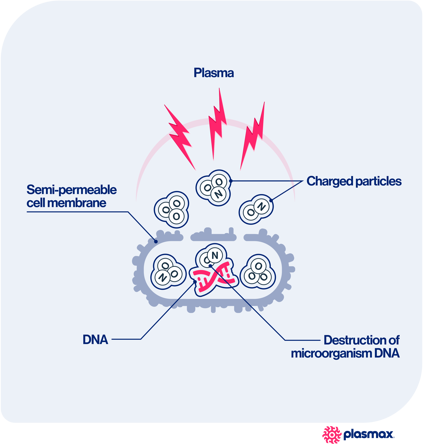How plasma affects
bacterias and viruses
Cold plasmas are partially ionized gases that contains both charged particles – electrons and ions – and uncharged particles, such as chemically reactive atoms and molecules. This makes the cell membrane porous for a few microseconds. Thus, intercellular structures, such as the DNA, can be destroyed by ultraviolet radiation and free radicals from the plasma. Particles react with the unprotected DNA of bacteria or virus and destroy it.


Why plasma harmless
for human cells
Human cell DNA is protected by a nucleus cell and the cellular repair mechanisms. Oxidative stress caused by the cold plasma free radicals are harmless for human and even stimulates cell biological survival mechanisms.
Plasma destructs up to 99.9% Bacteria & Viruses
Low-preasure plasma removes 99% volatile organic compounds (VOC), bacteria & viruses





